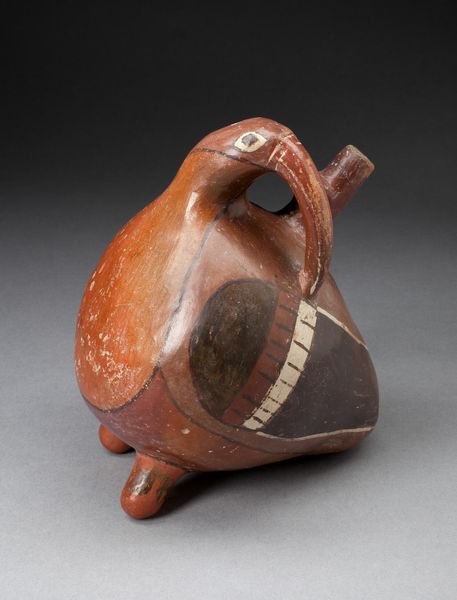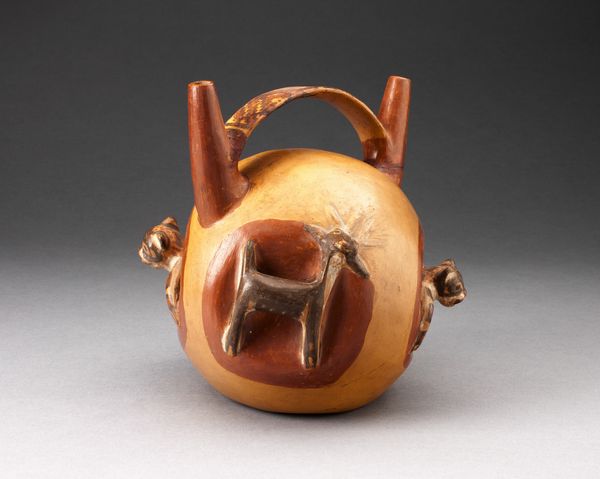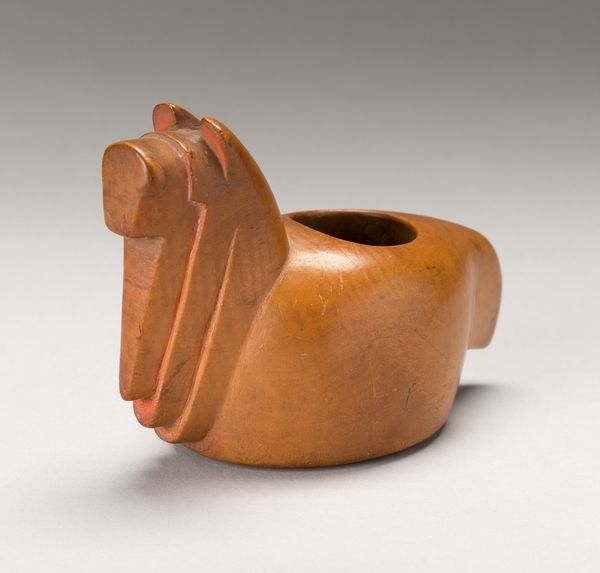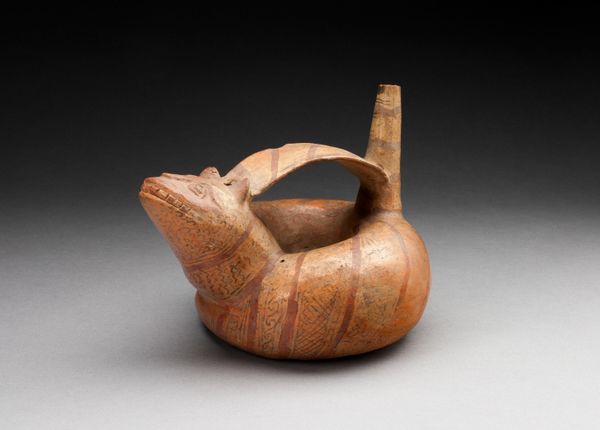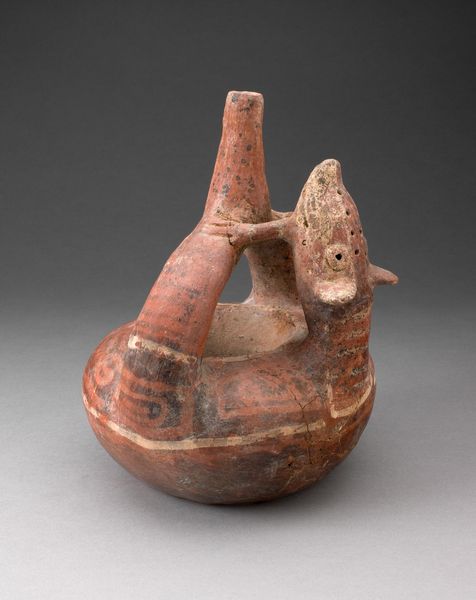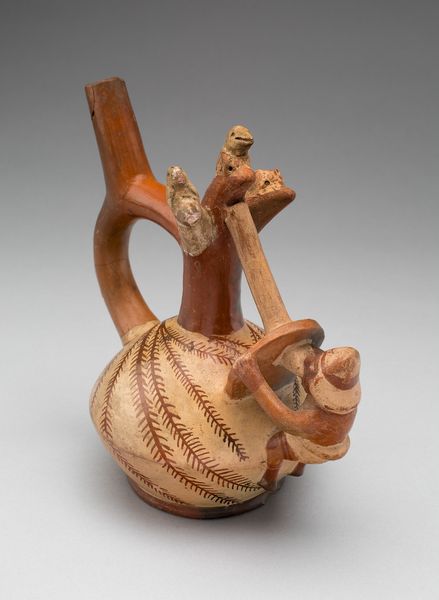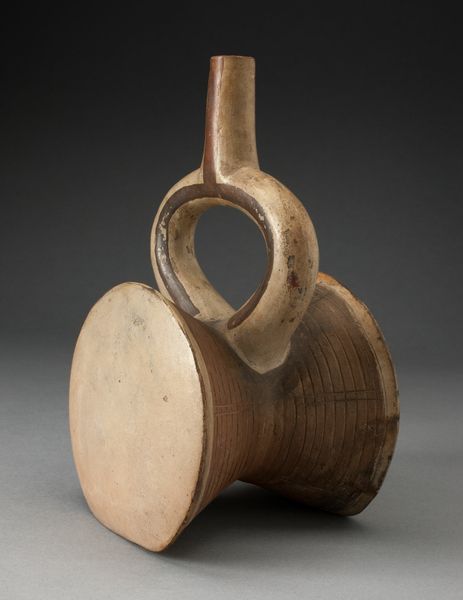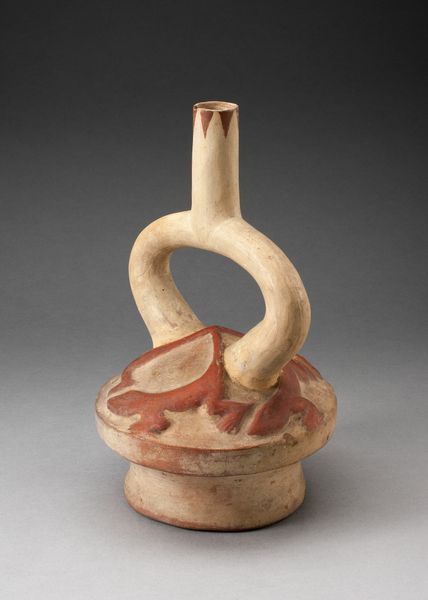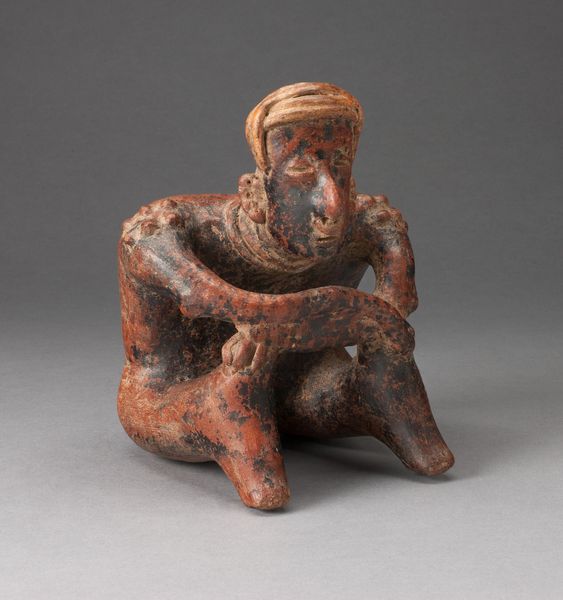
Double-Spout Bridge Vessel in the form of a Double-Headed Serpent Possibly 600 - 1000
0:00
0:00
ceramic, sculpture, terracotta
#
ceramic
#
figuration
#
sculpture
#
ceramic
#
terracotta
#
indigenous-americas
Dimensions: 13.5 × 19.7 cm (5 5/16 × 7 3/4 in.)
Copyright: Public Domain
This double-spout bridge vessel, crafted by the Tiwanaku people, is shaped as a double-headed serpent, an image laden with symbolism. Snakes, throughout history, have been potent symbols of duality—life and death, healing and poison. Here, the serpent’s form, conjoined yet distinct, echoes primordial concepts of cyclical existence. Think of the ouroboros, the snake that consumes its own tail, symbolizing eternity. From ancient Egypt to Norse mythology, similar serpentine figures emerge, each reflecting cultural anxieties and hopes surrounding renewal. Notice how this vessel's twin heads mirror each other, yet each possesses unique markings. The serpent’s emotional weight is a subconscious current, a visceral recognition of primal forces at play. The non-linear progression of this symbol shows that the serpent, though feared, is also revered—a reminder of the continuous ebb and flow that shapes our world and our inner selves.
Comments
No comments
Be the first to comment and join the conversation on the ultimate creative platform.
